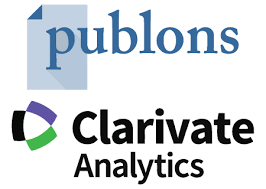Effects of the manager characteristics on environmental protection in Cameroonian firms
a foray through the upper echelon theory
DOI:
https://doi.org/10.59051/joaf.v14i1.619Keywords:
Business leader, Environmental protection, upper echelon theoryAbstract
Purpose: The objective of this paper is to examine the impact of executive demographic characteristics on the environmental indicator of CSR in Cameroonian financial and non-financial firms, including gender, age, education level and nationality of the executive.
Method: To achieve this objective, data from the National Institute of Statistics on the General Census of Enterprises for the year 2017 are used and the results are estimated using the Logit method.
Results: Through the Logit method, the salient estimates prove the positive and significant association between the gender of the leader and the environmental protection; they show the same relationship between the young leader and the environmental protection. On the other hand, the relationship between the level of education of the manager and environmental protection is negatively correlated.
Originality/Relevance: Compared to previous work on the role of executive demographics, this study contributes to the literature on executive characteristics and environmental performance, adding literature to the upper echelon theory. The study suggests that stakeholders can learn about the environmental performance of firms by analyzing and understanding the attributes of their leaders such as gender, age, and education level.
Downloads
References
Al-Duais, S. D., Qasem*, A., Wan-Hussin, W. N., Bamahros, H. M., Thomran, M., & Alquhaif, A. (2021). CEO Characteristics, Family Ownership and Corporate Social Responsibility Reporting: The Case of Saudi Arabia. Sustainability, 13, 12237.
Amore, M. D., Bennedsen, M., Larsen, B., & Rosenbaum, P. (2019). CEO education and corporate environmental footprint. Journal of Environmental Economics and Management, 94, 254-273.
Andrew, B., Gul, F., Guthrie, J., & Teoh, H. Y. (1989). A note on corporate social disclosure practices in developing countries: the case of Malaysia and Singapore. The British Accounting Review, 4, 371-376. doi: https://doi.org/10.1016/0890-8389(89)90034-6.
Bertrand, O., Betschinger, M.A. & Moschieri, C. (2021). Are Firms with Foreign CEOs Better Citizens? A Study of the Impact of CEO Foreignness on Corporate Social Performance. J. Int. Bus. Stud. 2021, 52, 525–543.
Borghesi, R., Houston, J. F., & Naranjo, A. (2014). Corporate socially responsible investments: CEO altruism, reputation, and shareholder interests. Journal of Corporate Finance, 26, 164–181.
Bouaziz, D.; Salhi, B. & Jarboui, A. (2020). CEO Characteristics and Earnings Management: Empirical Evidence from France. J. Financ. Report. Account. 18, 77–110.
Cameron, A.C., & Travedi, P.K. (2010). Microeconometrics Using Stata. A Stata Press Publication.
Carpenter, M. A., Geletkanycz, M. A., & Sanders, W. G. (2004). Upper echelons research revisited: Antecedents, elements, and consequences of top management team composition. Journal of Management, 30(6), 749-778.
Carrus, G.; Bonaiuto, M.; Bonnes, M. (2005). Environmental Concern, Regional Identity, and Support for Protected Areas in Italy. Environ. Behav. 37, 237–257.
Chin, M. K., Hambrick, D. C., & Treviño, L. K. (2013). Political ideologies of CEOs: The influence of executives' values on corporate social responsibility. Administrative Science Quarterly, 58, 197–232.
Clarkson, P., Richardson, L. G., & Vasvari, F. (2008). Revisiting the relation between environmental performance and environmental disclosure: An empirical analysis. Accounting, Organizations and Society, 33, 303–327.
De Villiers, C., & Van Staden, C. J. (2011). Where firms choose to disclose voluntary environmental information. Journal of Accounting & Public Policy, 30, 504–525.
Dissanayake, D., Tilt, C. & Xydias-Lobo, M., (2016). Sustainability reporting by publicly listed companies in Sri Lanka. J. Clean. Prod. 129, 169–182. https://doi.org/10.1016/j.jclepro.2016.04.086.
Doornik, J. A., and H. Hansen. 2008. An omnibus test for univariate and multivariate normality. Oxford Bulletin of Economics and Statistics 70: 927–939. https://doi.org/10.1111/j.1468-0084.2008.00537.x.
Du, X., Jian, W., Zeng, Q., & Du, Y. (2014). Corporate environmental responsibility in polluting industries: Does religion matter? Journal of Business Ethics, 124, 485–507.
Elmagrhi, M. H., Ntim, C. G., Elamer, A. A., & Zhang, Q. (2018). A study of environmental policies and regulations, governance structures, and environmental performance: The role of female directors. Business Strategy and the Environment, 28, 206–220.
Fabrizi, M., Mallin, C., & Michelon, G. (2014). The role of CEO’s personal incentives in driving corporate social responsibility. Journal of Business Ethics, 124(2), 311-326.
Fabrizi, M., Mallin, C., & Michelon, G. (2014). The role of CEO's personal incentives in driving corporate social responsibility. Journal of Business Ethics, 124, 311–326.
Ferrell, O. C., Fraedrich, J., & Ferrell, L. (2017). Business ethics: Ethical decision making and cases (11th ed.). USA: Cengage Learning. Boston.
Gao, Y. (2009). Corporate social performance in China: Evidence from large companies. Journal of Business Ethics, 89, 23–35. https://doi.org/10.1007/s10551‐008‐9982‐y.
García‐Sánchez, I. M., Rodríguez‐Domínguez, L., & Gallego‐Álvarez, I. (2013). CEO qualities and codes of ethics. European Journal of Law and Economics, 35, 295–312.
Gerged, A. M., Beddewela, E. S., & Cowton, C. J. (2020). "Is corporate environmental disclosure associated with firm value? A multi-country study of Gulf Cooperation Council firms". Business Strategy and the Environment.
Giannarakis, G., Andronikidis, A., & Sariannidis, N. (2019). "Determinants of environmental disclosure: investigating new and conventional corporate governance characteristics". Annals of Operations Research, pp. 1-19.
Giannetti, M., Liao, G., & Yu, X. (2015). The brain gain of corporate boards: Evidence from China. Journal of Finance, 70, 1629–1682. https://doi.org/10.1111/jofi.12198.
Hambrick, D. C. (2007). Upper echelons theory: An update. Academy of Management Review, 32, 334–343. https://doi.org/10.5465/amr.2007.24345254.
Hambrick, D. C., & Mason, P. A. (1984). Upper echelons: The organization as a reflection of its top managers. Academy of Management Review, 9, 193–206. https://doi.org/10.5465/amr.1984.4277628.
Henze, N., & B. Zirkler. 1990. A class of invariant consistent tests for multivariate normality. Communications in Statistics—Theory and Methods 19: 3595–3617.
Horbach, J., & Jacob, J. (2018). The relevance of personal characteristics and gender diversity for (eco‐)innovation activities at the firm‐level: Results from a linked employer–employee database in Germany. Business Strategy and the Environment, 27, 924–934.
Hosmer, D. W., Jr., S. A. Lemeshow, & Sturdivant, R. X. (2013). Applied Logistic Regression. 3rd ed. Hoboken, NJ: Wiley.
Huang, S. K. (2013). The impact of CEO characteristics on corporate sustainable development. Corporate Social Responsibility and Environmental Management, 20, 234–244.
Jo, H., & Harjoto, M.A., (2012). The Causal Effect of Corporate Governance on Corporate Social Responsibility. J. Bus. Ethics 106, 53–72. https://doi.org/10.1007/s10551-011-1052-1.
Kang, J. (2017). Unobservable CEO characteristics and CEO compensation as correlated determinants of CSP. Business & Society, 56, 419–453.
Kang, J. (2017). Unobservable CEO characteristics and CEO compensation as correlated determinants of CSP. Business & Society, 56, 419–453. https://doi.org/10.1177/0007650314568862.
Kansal, M., Joshi, M., & Batra, G.S., (2014). Determinants of corporate social responsibility disclosures: Evidence from India. Adv. Account. 30, 217–229. https://doi.org/10.1016/j.adiac.2014.03.009.
Kassinis, G., Panayiotou, A., Dimou, A., & Katsifaraki, G. (2016). Gender and environmental sustainability: A longitudinal analysis. Corporate Social Responsibility and Environmental Management, 23(6), 399-412.
Khan, T.M.; Gang, B.; Fareed, Z. & Yasmeen, R. (2020). The Impact of CEO Tenure on Corporate Social and Environmental Performance: An Emerging Country’s Analysis. Environ. Sci. Pollut. Res. 27, 19314–19326.
Kish‐Gephart, J. J., Harrison, D. A., & Trevino, L. K. (2010). Bad apples, bad cases, and bad barrels: Meta‐analytic evidence about sources of unethical decisions at work. Journal of Applied Psychology, 95, 1–31. https://doi.org/10.1037/a0017103.
Lau, C., Lu, Y., & Liang, Q. (2016). Corporate social responsibility in China: A corporate governance approach. Journal of Business Ethics, 136, 73–87. https://doi.org/10.1007/s10551‐014‐2513‐0.
Lee, W. S., Sun, K. A., & Moon, J. (2018). Application of upper echelon theory for corporate social responsibility dimensions: Evidence from the restaurant industry. Journal of Quality Assurance in Hospitality & Tourism, 19(3), 387-414.
Liao, L., Luo, L., & Tang, Q. (2015). Gender diversity, board independence, environmental committee and greenhouse gas disclosure. British Accounting Review, 47, 409–425.
Lindblom, T.; Mavruk, T. & Sjögren, S. (2018). East or West, Home Is Best: The Birthplace Bias of Individual Investors. J. Bank. Financ. 92, 323–339.
Luo, I., & Tang, Q. (2014). Does voluntary carbon disclosure reflect underlying carbon performance? Journal of Contemporary Accounting and Economics, 10, 191–205.
Manner, M. H. (2010). The impact of CEO characteristics on corporate social performance. Journal of Business Ethics, 93, 53–72. https://doi.org/10.1007/s10551‐010‐0626‐7.
Mardia, K. V. (1970). Measures of multivariate skewness and kurtosis with applications. Biometrika 57: 519–530. https://doi.org/10.2307/2334770.
Mardia, K. V., J. T. Kent, & Bibby, J. M. (1979). Multivariate Analysis. London: Academic Press.
Marquis, C., & Qian, C. (2014). Corporate social reporting in China: Symbol or substance. Organization Science, 25, 127–148. https://doi.org/10.1287/orsc.2013.0837.
Mazutis, D. D. (2013). The CEO effect: A longitudinal, multilevel analysis of the relationship between executive orientation and corporate social strategy. Business & Society, 52, 631–648.
McCarthy, S., Oliver, B., & Song, S. (2017). Corporate social responsibility and CEO confidence. Journal of Banking & Finance, 75, 280–291. https://doi.org/10.1016/j.jbankfin.2016.11.024.
McGuinness, P. B., Vieito, J. P., & Wang, M. (2017). The role of board gender and foreign ownership in the CSR performance of Chinese listed firms. Journal of Corporate Finance, 42, 75–99.
Meyer, A. (2016). Heterogeneity in the preferences and pro-environmental behavior of college students: the effects of years on campus, demographics, and external factors. Journal of Cleaner Production, 112, 3451-3463.
Noronha, C., Tou, S., Cynthia, M. I., & Guan, J. (2013). Corporate social responsibility reporting in China: An overview and comparison with major trends. Corporate Social Responsibility and Environmental Management, 20, 29–42. https://doi.org/10.1002/csr.1276.
Ntim, C. G., & Soobaroyen, T. (2013a). Corporate governance and performance in socially responsible corporations: New empirical insights from a neo‐institutional framework. Corporate Governance: An International Review, 21, 468–494. https://doi.org/10.1111/corg.12026.
Ntim, C. G., & Soobaroyen, T. (2013b). Black economic empowerment disclosures by South African listed corporations: The influence of ownership and board characteristics. Journal of Business Ethics, 116(1), 121–138. https://doi.org/10.1007/s10551‐012‐1446‐8.
Oh, W. Y., Chang, Y. K., & Cheng, Z. (2016). When CEO career horizon problems matter for corporate social responsibility: The moderating roles of industry‐level discretion and blockholder ownership. Journal of Business Ethics, 133, 279–291.
Pensel, J-L. (2010). Technologies de l'information et de la communication (tic) et parties prenantes minoritaires : vers l'entreprise. « Management & Avenir », vol. 9 n°39, pages 407 à 424.
Petrenko, O. V., Aime, F., Ridge, J., & Hill, A. (2016). Corporate social responsibility or CEO narcissism? CSR motivations and organizational performance. Strategic Management Journal, 37, 262–279. https://doi.org/10.1002/smj.2348.
Rahman, N.H.W.A., Zain, M.M., & Al-Haj, N.H.Y.Y., (2011). CSR disclosures and its determinants: evidence from Malaysian government link companies. Soc. Responsib. J. 7, 181–201.
Reimer, M., Van Doorn, S., & Heyden, M. L. (2018). Unpacking functional experience complementarities in senior leaders' influences on CSR strategy: A CEO–top management team approach. Journal of Business Ethics, 151, 977–995. https://doi.org/10.1007/s10551‐017‐3657‐5.
Ren, S.;Wang, Y.; Hu, Y.; Yan, J. (2021). CEO Hometown Identity and Firm Green Innovation. Bus. Strateg. Environ. 2021, 30, 756–774.
Scott, W. R. (2001). Institutions and organizations (2nd ed.). Thousand Oaks, CA: Sage.
Serfling, M. A. (2014). CEO age and the riskiness of corporate policies. Journal of Corporate Finance, 25, 251–273. https://doi.org/10.1016/j.jcorpfin.2013.12.013.
Serfling, M. A. (2014). CEO age and the riskiness of corporate policies. Journal of Corporate Finance, 25, 251–273. https://doi.org/10.1016/j.jcorpfin.2013.12.013.
Shahab Y, Ntim CG, Chen Y, Ullah F, Li H‐X, Ye Z. (2019). Chief executive officer attributes, sustainable performance, environmental performance, and environmental reporting: New insights from upper echelons perspective. Bus Strat Env.1–16. https://doi.org/10.1002/bse.2345.
Shahab Y, Ntim CG, Chen Y, Ullah F, Li H‐X, Z. Ye (2019). Chief executive officer attributes, sustainable performance, environmental performance, and environmental reporting: New insights from upper echelons perspective. Bus. Strat Env. 2019;1–16. https://doi.org/10.1002/bse.2345.
Shahab, Y., & Ye, C. (2018). Corporate social responsibility disclosure and corporate governance: Empirical insights on neo‐institutional framework from China. International Journal of Disclosure and Governance, 15, 87–103. https://doi.org/10.1057/s41310‐018‐0038‐ySimon, H. A. (1972). In Management Science Theories of Bounded Rationality. Decision and Organization, pp. 161–176.
Shahab, Y., Ntim, C. G., & Ullah, F. (2018). The brighter side of being socially responsible: CSR ratings and financial distress among Chinese state and non‐state owned firms. Applied Economics Letters, 26(3), 1–7.
Shahab, Y., Ntim, C. G., & Ullah, F. (2018). The brighter side of being socially responsible: CSR ratings and financial distress among Chinese state and non‐state owned firms. Applied Economics Letters, 26(3), 1–7.
Shahab, Y., Ntim, C. G., Chengang, Y., Ullah, F., & Fosu, S. (2018). Environmental policy, environmental performance, and financial distress in China: Do top management team characteristics matter? Business Strategy and the Environment, 27, 1635–1652. https://doi.org/10.1002/bse.2229.
Sitthipongpanich, T., & Polsiri, P. (2015). Do CEO and board characteristics matter? A study of Thai family firms. Journal of Family Business Strategy, 6(2), 119-129.
Soobaroyen, T., & Ntim, C. G. (2013). Social and environmental accounting as symbolic and substantive means of legitimation: The case of HIV/AIDS reporting in South Africa. Accounting Forum, 37(2), 92–109. https://doi.org/10.1016/j.accfor.2013.04.002.
Tingbani1, I., Chithambo, L., Venancio Tauringana, V., & Papanikolaou, N. (2020). Board gender diversity, environmental committee and greenhouse gas voluntary disclosures. Bus Strat Env. 1–17.
Toe M. (2014c), « Diversité du genre au conseil d’administration : vers une amélioration de la gouvernance des entreprises ? », Gestion 2000, vol. 31, n°3, 26, pp. 87-113.
Tracey, N.P., (2014). Corporate reputation and financial performance: Underlying dimensions of corporate reputation and their relation to sustained financial performance. Queensland University of Technology Brisbane Australia.
Veprauskaite, E.; Adams, M. (2013). Do Powerful Chief Executives Influence the Financial Performance of UK Firms? Br. Account. Rev. 45, 229–241.
Wu, L.‐Z., Kwan, H. K., Yim, F. H.‐K., Chiu, R. K., & He, X. (2015). CEO ethical leadership and corporate social responsibility: A moderated mediation model. Journal of Business Ethics, 130, 819–831. https:// doi.org/10.1007/s10551‐014‐2108‐9.
Yang, H. H., Craig, R., & Farley, A. (2015). A review of Chinese and English language studies on corporate environmental reporting in China. Critical Perspectives on Accounting, 28, 30–48.
Yuan, R., & Wen, W. (2018). Managerial foreign experience and corporate innovation. Journal of Corporate Finance, 48, 752–770. https://doi.org/10.1016/j.jcorpfin.2017.12.015.
Zahid M., Rahman HU., Ali W., Khan M., Alharthi M., Imran Qureshi M., Jan A. (2019). Boardroom gender diversity: Implications for corporate sustainability disclosures in Malaysia, Journal of Cleaner Production, doi: https://doi.org/10.1016/j.jclepro.2019.118683.
Zaid, M.A.A., Wang, M., Adib, M, Sahyouni, A., Abuhijleh, S.T.F. (2020). Boardroom Nationality and gender diversity: Implications for corporate sustainability performance, Journal of Cleaner Production.
Zhang, C. (2017). Political connections and corporate environmental responsibility: Adopting or escaping?. Energy Economics, 68, 539-547.
Downloads
Published
How to Cite
Issue
Section
License
Copyright (c) 2023 Petronille Cynthia Agoume Isseme

This work is licensed under a Creative Commons Attribution-NonCommercial-NoDerivatives 4.0 International License.
Authors who publish with this journal agree to the following terms:
- Authors retain copyright and grant the journal right of first publication with the work simultaneously licensed under a Creative Commons Attribution License that allows others to share the work with an acknowledgement of the work's authorship and initial publication in this journal.
- Authors are able to enter into separate, additional contractual arrangements for the non-exclusive distribution of the journal's published version of the work (e.g., post it to an institutional repository or publish it in a book), with an acknowledgement of its initial publication in this journal.
- Authors are permitted and encouraged to post their work online (e.g., in institutional repositories or on their website) prior to and during the submission process, as it can lead to productive exchanges, as well as earlier and greater citation of published work (See The Effect of Open Access).






















